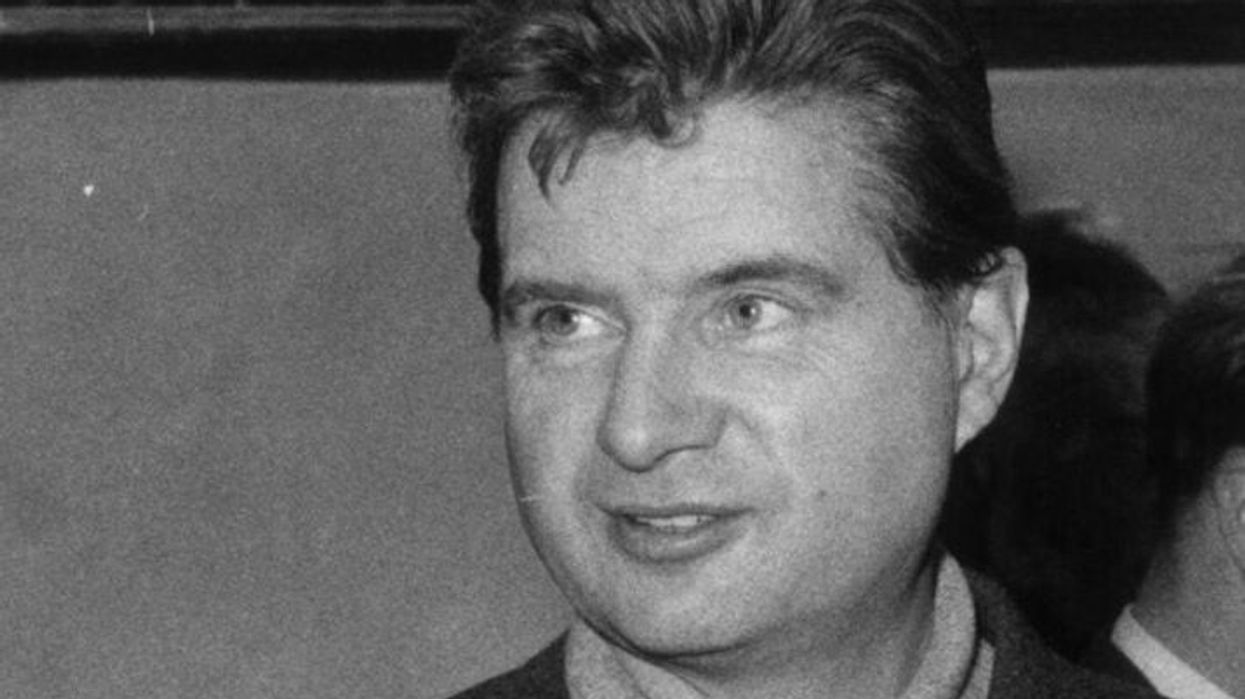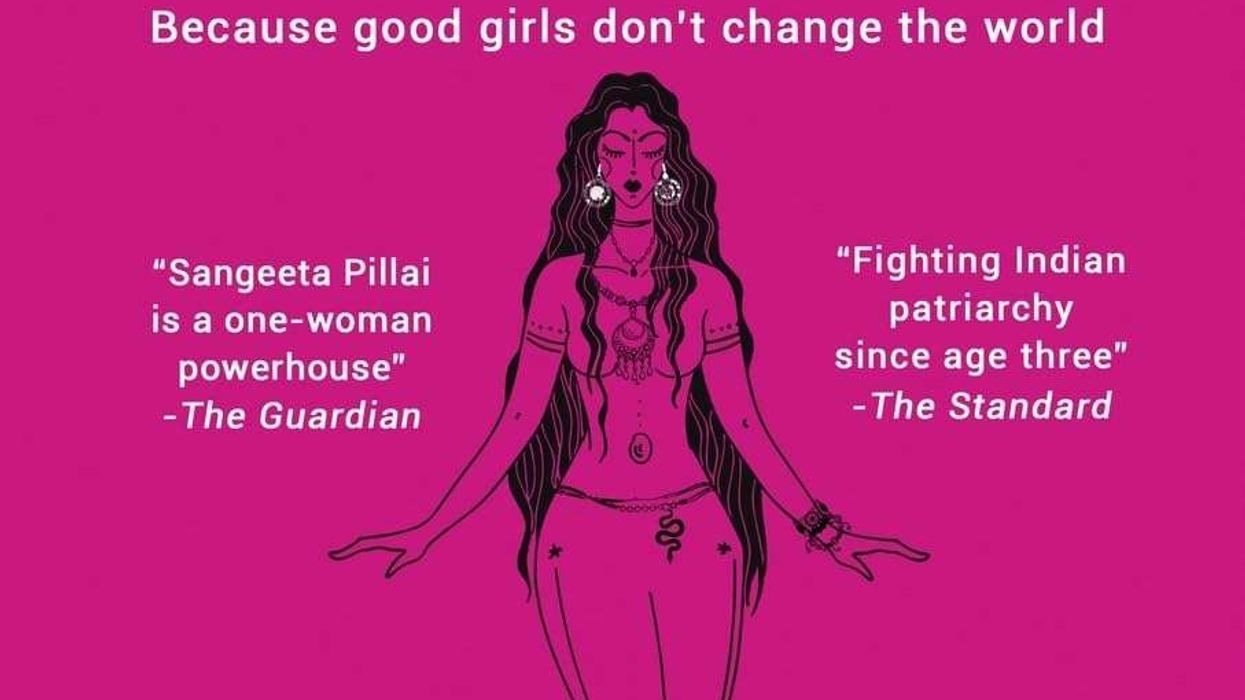THE British Asian coming fresh to Francis Bacon would probably be quite repulsed by his portraits.
Certainly, if he had wanted a flattering portrait of himself or any of his relatives, Bacon would have been the last artist he would have commissioned. His party trick was to contort and distort faces so they looked quite terrible. To be fair, he did that even with his self-portraits.
But there is more to Bacon than meets the eye.
The National Portrait Gallery currently has an exhibition, Francis Bacon: Human Presence, which the gallery’s interim director, Michael Elliott, introduced by telling journalists: “This exhibition marks the gallery’s first major exhibition of the portraiture of Francis Bacon. We are honoured to be presenting the longoverdue exploration of one of the greatest British painters of the 20th century.
“It features more than 55 works from the 1950s onwards. Works from private and public collections showcase Bacon’s life story accompanied by the artist’s self-portraits. Sitters include Lucian Freud, Isabel Rawsthorne and lovers Peter Lacy and George Dyer.”
The exhibition has been curated by Rosie Broadley, joint head of curatorial and senior curator of 20th century collections. She said: “The title of the exhibition was taken from a quote that Bacon made quite early in his career, in the early 1950s.”
She read out what Bacon had said to explain why he painted the way that he did: “I would like my pictures to look as if a human had passed between them like a snail, leaving a trail of human presence and memory trace of the past events as the snail leaves its slime.”
This, observed Broadley, “is an incredibly Bacon sort of thing to say, because it (his work) is sort of repulsive, but also haunting at the same time. And I think that is often the way people feel about Bacon’s paintings.”
“And the idea of memory trace is really interesting,” she went on. “Because there’s a lot in this exhibition which is about human presence. There are individuals that appear in his paintings but also absences. There are memories.
There are people that he’s painting after they have died.”
Francis Bacon self-portraitShe stressed: “Francis Bacon challenges and also embraces the idea of portraiture which, if we think about the National Portrait Gallery’s collection of portraits, is usually defined by and sort of valued on whether it’s a good likeness. Does it look like that person? What does it say about that person? What was their status? What was their occupation? Something about their character?
“Bacon’s not interested in any of that at all. What he really wants to capture is what he called the emanations of the person, or the pulsations of a person.”
Bacon was born in Dublin in 1909 and moved to London in 1925. He subsequently spent time in Berlin and Paris, absorbing the cultures of both cities and embracing their decadence. He had no formal training in art or painting, but his broad appreciation for all types of visual culture, and his appropriation of unconventional sources, gave Bacon the tools to become an artist.
The exhibition charts the development of portraiture through Bacon’s career – from the series of ‘screaming’ figures in the late 1940s and his obsession with Diego Velázquez’s 17th-century masterpiece, Portrait of Pope Innocent X, through to the paintings he made of his closest friends, including lovers Lacy and Dyer and fellow artists Freud and Rawsthorne, whose appearance and personalities inspired Bacon for several decades. “He became an artist of note in 1945,” said Broadley.
“He tried having sitters in his studio so he was painting from life. Then he moved on to thinking about portraits by previous artists, among them Velázquez, van Gogh, Degas and Picasso. Rembrandt was important – and we are privileged to have an actual Rembrandt in this exhibition as well.”
Bacon revered Rembrandt’s Self-portrait with Beret, which he had seen as a young man in Aix-en-Provence. He went on to emulate the Old Master’s extensive project of self-scrutiny across numerous self-portraits.
Two portraits, in particular, provided Bacon with a rich resource of imagery and possibility: Velázquez’s Portrait of Pope Innocent X and van Gogh’s The Painter on the Road to Tarascon.
In Bacon’s hands, Velázquez’s Pope went through numerous transformations during the 1950s and 60s. Van Gogh’s depiction of himself was remade, according to Bacon, as “a phantom on the road”.
“He used photographs as well,” said Broadley. “He said he could paint people only if he knew them very well and could observe their contours.
“He was a great painter of women – Lisa Sainsbury, Muriel Belcher, Isabel Rawsthorne. Isabel is an artist herself and I’m sure they talked a lot about technique and approach. It is lovely to think of the relationships they had with each other.”
Bacon’s reimagining of Vincent van Gogh’s The Painter on the Road toTarasconBacon did not slavishly copy photographs, Broadley pointed out. “He reinvents them, he transforms them, and then he paints the same image over and over again to the point of obsession.
“George Dyer and Peter Lacy are fascinating in that they are his lovers and partners, and Bacon is gay at a time when homosexuality was illegal. And that’s definitely worth bearing in mind because they were very traumatic, tortured relationships.
“While Bacon never hid his sexuality, there was a threat of arrest at all times for all of them.”
George Dyer (1934-1971) is the greatest presence in Bacon’s portraits, testament to the impact the young man had both in the artist’s life and on his imagination. Handsome, impeccably dressed and presenting as straight, Dyer was a petty criminal from southeast London who had occasional dealings with the infamous criminal Kray twins.
In 1964, the pair travelled together to Malta, Sicily, Naples and Monte Carlo, but the relationship was already marred by arguments.
In 1971, Dyer took a fatal overdose in Paris, where he had travelled with Bacon to attend the opening of the artist’s major retrospective at the Grand Palais. Bacon continued to paint him, from photographs and memory, in the ensuing decades.
John Edwards (1949-2003) was Bacon’s partner in later life. He was a pub manager from east London who had little interest in the art world, commenting that Bacon “felt very free with me because I was a bit different from most people he knew”.
Edwards was in his 20s when he met Bacon in the Colony Room club, run by Muriel Belcher, in the mid-1970s. Edwards and Bacon travelled widely together and over the years, their relationship became paternal.
He was the subject of many of Bacon’s later paintings, and the artist left the whole of his estate to Edwards. In 1998, Edwards donated the entire contents of the studio to the Hugh Lane Gallery in Dublin, the city of Bacon’s birth.
Bacon once said: “I’ve done a lot of self-portraits, really because people have been dying around me like flies and I’ve had nobody else to paint but myself.”
He also remarked: “I think art is an obsession with life and, after all, as we are human beings, our greatest obsession is with ourselves.”
Francis Bacon: Human Presence is on at the National Portrait Gallery, London, until January 19, 2025












